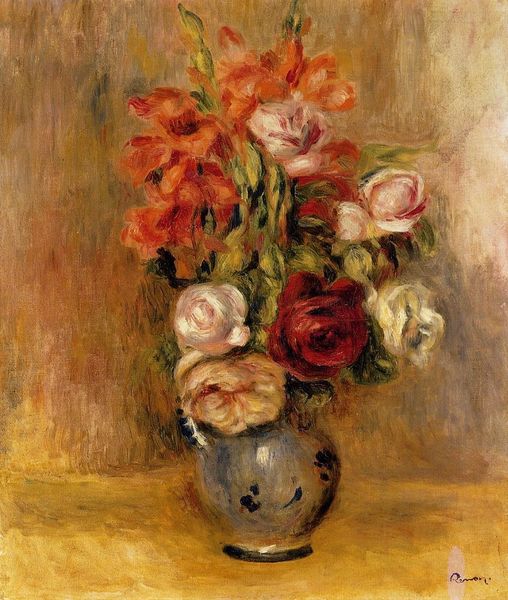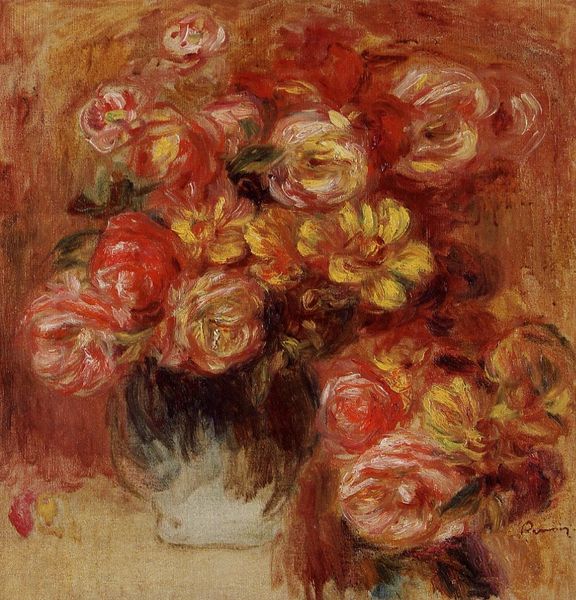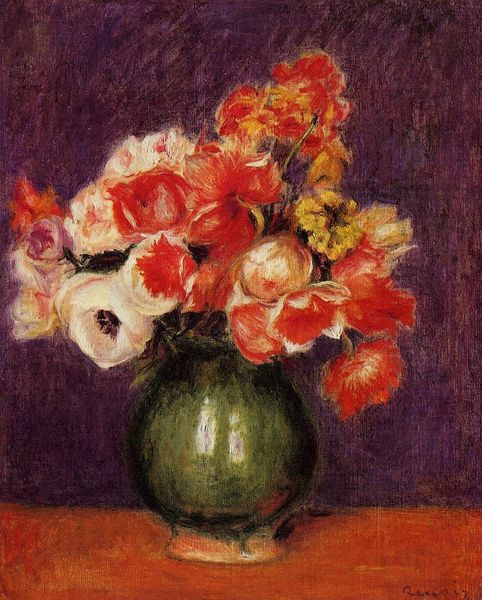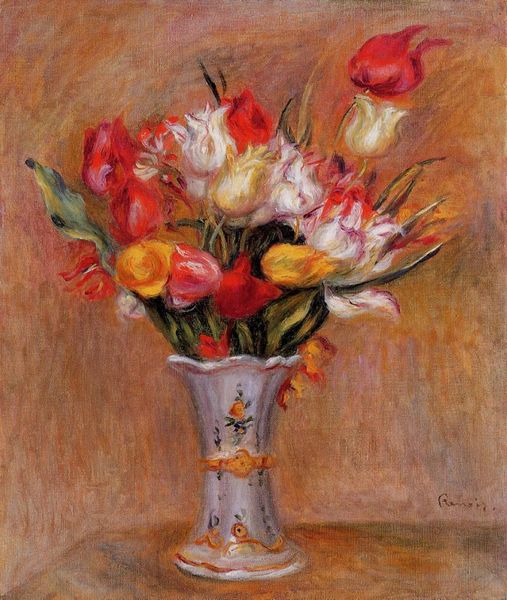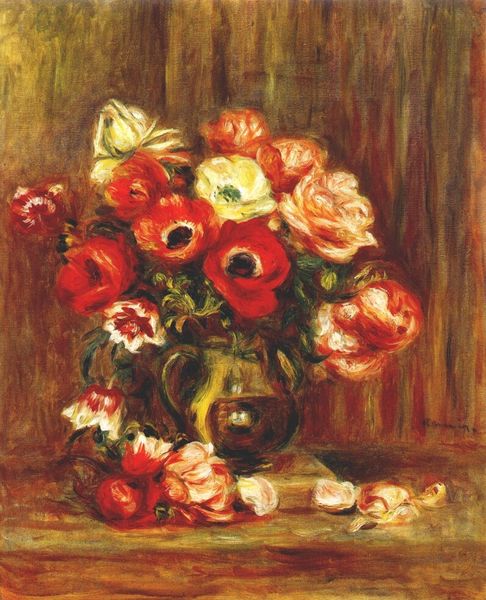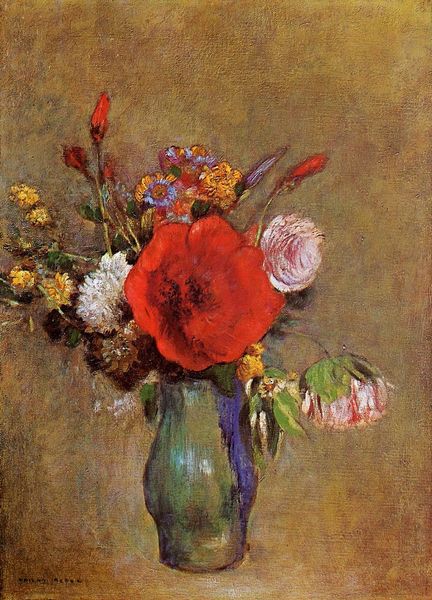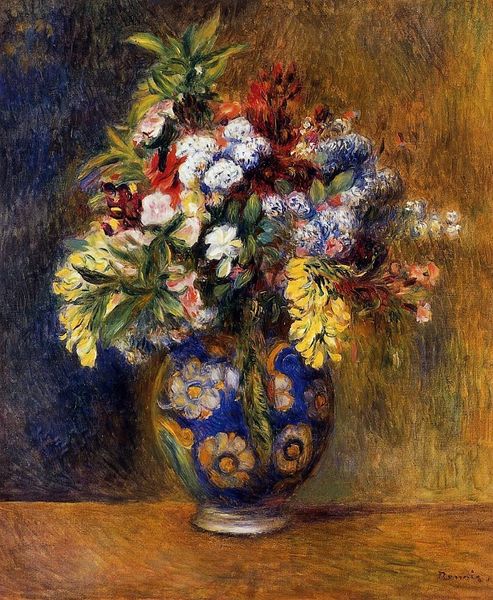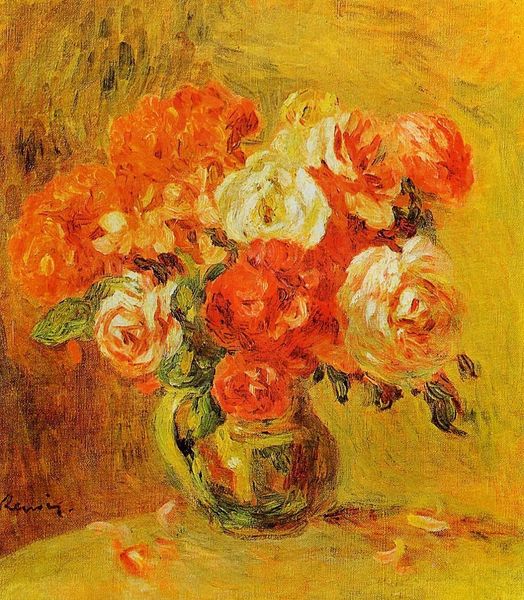
painting, oil-paint
#
painting
#
impressionism
#
french
#
oil-paint
#
oil painting
Copyright: Public domain
Pierre-Auguste Renoir painted this vase of tulips and anemones with oil on canvas. Flowers, as a motif, have for centuries acted as potent symbols, bearing cultural and emotional weight. Here, the lush arrangement, particularly the tulips, remind us of their explosive popularity during the Dutch Golden Age, a period marked by speculative frenzy and the ephemeral nature of beauty and wealth. The tulip, once a symbol of prosperity, underscores the transient nature of life's pleasures. Anemones, known as windflowers, carry associations with fragility and the fleeting nature of existence. These blooms, so delicately rendered, hint at a deeper reflection on mortality. Consider how floral motifs appear in vanitas paintings, where skulls and decaying fruit remind us of life's brevity. This arrangement engages us on a subconscious level, evoking a sense of nostalgia, and an awareness of the cyclical nature of life. Like a memento mori, Renoir invites us to contemplate our own existence.
Comments
No comments
Be the first to comment and join the conversation on the ultimate creative platform.
